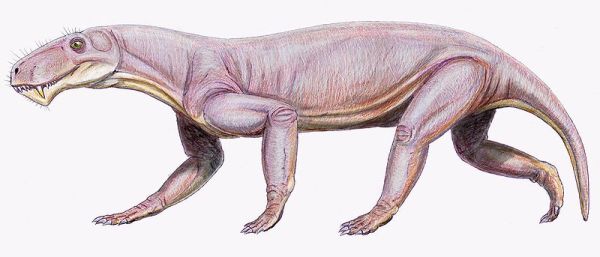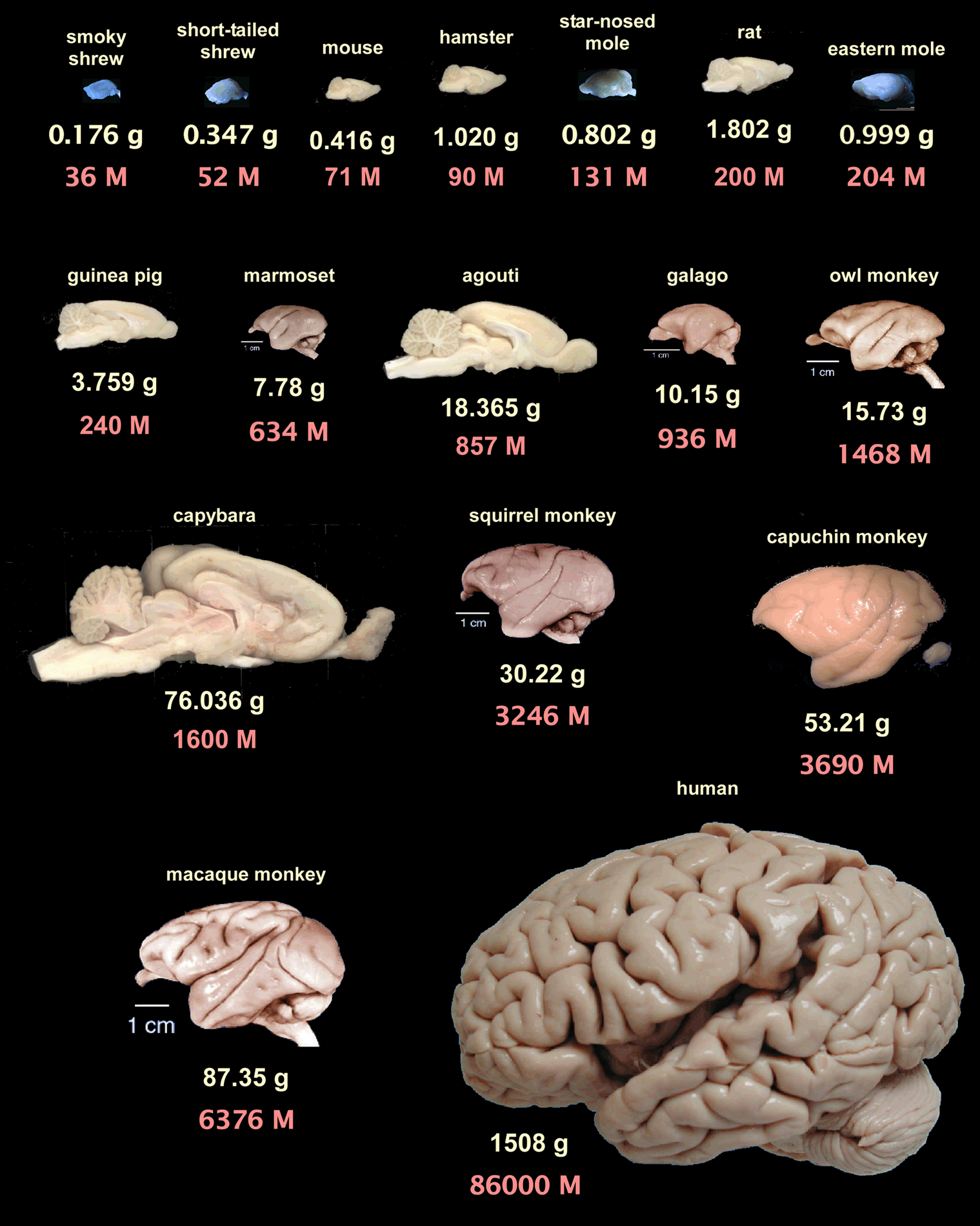Today
they are the most successful group, very high diversity
Origin: about
200 million years ago, there were a group of reptiles called therapsids
(emlősszerű őshűllők) which had straighter legs and ran faster than other
reptiles.
What therapsids might have looked like…..
 |
 |
It is believed that the first mammals evolved
from these animals. The first mammals
were very small insectivores, followed by rodents (ragcsálók). About 65 million years ago, the temperature
dropped creating new habitats that the mammals could fill, since they were
endothermic and thus less affected by the environmental temperatures. They also exhibit wide variation in size,
appearance, lifestyle, etc. At this time
the flowering plants also began to appear, which also created new habitats.
BODY STRUCTURE
New unique features: hair/fur, milk secretion to feed young, live
birth (viviparous), extended parental care, large and well-developed brain,
outer ear, diaphragm (rekeszizóm)
Hair/fur – modified scales, made of keratin,
provide insulation, help to maintain body temperature
Endothermic – constant body temperature allows
them to be active at any time of day and in extreme environments.
Glandular skin (gland = mirigy) – sweat glands
produce sweat (salty water mixture) which helps with heat control, oil glands
(also called sebaceous glands) help to keep hair and skin in good condition and
prevent drying, scent glands are useful in defense (eg. skunks) and mating,
mammary glands secrete milk to feed young
 |
Circulatory system – 4-chambered heart with
double circuit circulation, very efficient
 |
Teeth – specialized teeth for different functions: incisors (metsző) are for cutting (like biting plants), canines (szem) are for puncturing and tearing, gripping prey (large in carnivores), premolars (előzáp) and molars (záp) are good for crushing, grinding, shearing, chewing to mash the food into a pulpy mass (called a bolus). The presence/absence and the size and shape of the teeth tell us what the animal eats.
 |
Complex nervous system – have a brain in which the forebrain (called the cerebrum) becomes increasingly large, folded and wrinkled as the animal becomes increasingly intelligent. Mammals can learn complex behaviours (like parental care) and have good memories.
 |
Reproduction – mammals have internal fertilization and most
are viviparous (they give birth to living young – no eggs). The fertile period in females is called
estrus and, depending on the species, happens at differing cyclical intervals
(eg. monthly in humans, annually in deer).
In most species, the female gives birth to relatively few young, as
their survival is improved by the extended parental care that is observed in
mammals.
Behaviours:
In conditions of extreme weather, some species enter periods
of slowed or reduced metabolism. The
general term is dormancy, when the
animal’s metabolism is reduced to use a minimum of energy. The length of the period is variable, but the
animal will usually “wake up”
during the dormant period, have a short active period and then re-enter
dormancy. Hibernation refers specifically to a dormant period that occurs in
cold weather. It is an extended period
of dormancy for which the animal prepares by storing fat on its body, etc. Estivation
is similar to hibernation, except it occurs in periods of hot temperatures.
Territoriality is a behaviour that is common in many
mammals, which the animal distinguishes an area as its own and will fight with
another member of its species if it tries to enter the territory. Often scent glands are used to delineate the
territory.
Migration at the change of season is commonly observed in
herding animals to move from areas with poor food resources to areas with
better food resources.
Socialization is observable in higher mammals, where young are taught behaviours that help them to be a part of the herd/group/population.
(Classification to follow....... next year??)
No comments:
Post a Comment